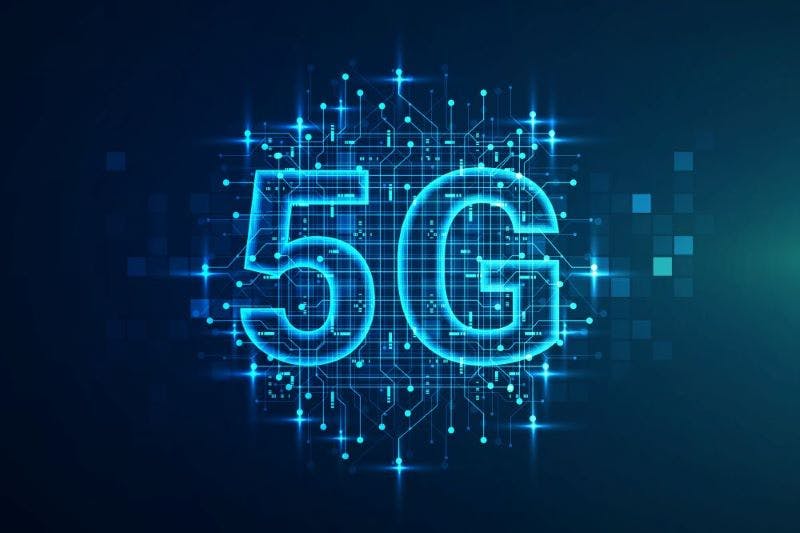Home


Resource Center

As the next evolution in high-speed wireless service, 5G utilizes a network of sophisticated technologies to deliver ultra-high transmission speeds and low-latency connections through high frequency radio waves. Though it uses much of the existing 4G network as a backbone, 5G needs new infrastructure to support the new spectrum to fully deliver on its technical promise.
One of the most frequently proposed ways of building the needed capacity is to use small cell technology. As the 5G rollout continues, there’s a lot of conversation about whether small cells can really deliver the future of 5G.
What Is Small Cell Technology?

Normal cell phone towers associated with 3G and 4G networks are also known as macrocells. They’re the base stations that broadcast wireless signals at frequencies typically between 600 and 2300 MHz in North America. Other regions utilize other similar frequencies. These are the familiar networks that delivered the first high-speed broadband services for mobile devices.
Macrocells are normally high-power and have a long range, but at the higher frequencies commonly used by 5G, it’s not possible to deploy service over them because the range of 5G is substantially less then 3G/4G. Poor service can result in higher latency, the time between a user’s actions and the network’s ability to respond.
High-band 5G uses radio frequencies above 24GHz, typically referred to as “millimeter wave (mmW)” frequencies. These allow for much faster speeds because there’s more spectrum used, and it all but eliminates latency. While the difference in speed is dramatic, mmW transmissions also have more limited range than their lower-frequency counterparts. Delivering this kind of signal with enough bandwidth to accommodate the expected demand requires different kinds of infrastructure.
Many technology experts claim that small cell technology is necessary for 5G infrastructure. Small cells are a miniaturized version of the macrocell technology of cell towers. Individually, they use a lot less power and have shorter ranges—anywhere from a few to a few hundred meters.
In order to provide coverage, these miniature base stations have to be deployed in higher density, in groups or swarms called small cell networks. The idea is that the individual small cells work together in huge numbers, hundreds or even thousands strong, to relay 5G signals across a city or a region.
Will 5G Small Cells Be Able to Cover Long Distances?

One of the big questions about small cells is whether they will be able to cover the long distances that are eventually going to be demanded of 5G service, since existing nationwide coverage is presently a bit limited and patchy, and that is with lower band spectrum. The answer is that it’s possible, but there are some major caveats.
Challenge 1: The Sheer Number of Small Cells Needed
The sheer quantity of small cells that would be needed to fully power a truly nationwide 5G network is staggering. The cost of producing millions of these devices is just the first step in deploying a network.
For every small cell that needs to be placed, there are other factors to consider:
– Analyzing network traffic to work out where to place small cells
– Selecting and acquiring a site
– Supplying power to that site
– Trenching fiber
– Providing a data connection
– Maintaining each node in the small cell network
Each of these factors adds to the time and expense it takes to build a small cell network. Often, local laws require permits or have specific regulations to comply with. Power limitations can limit the number of small cells that can be installed in certain places. Sufficient data connection and access to a fiber backbone may also present challenges—making small cells less viable as a networking solution in some places.
Challenge 2: Small Cells Aren’t Carrier Agnostic
At present, small cell networks are generally designed around delivering 5G signals for one carrier. While frequently discussed and technically possible, multi-carrier small cells are currently unavailable. So, for multiple carriers to service an area, each mobile operator needs to navigate a tangle of local regulations and technical limitations in order to design separate but overlapping networks.
Given how complicated and expensive this could ultimately make the whole enterprise, there’s a growing argument that the carrier-exclusive small cell model needs to be jettisoned in favor of network sharing. However, we’re not there yet.
Challenge 3: Small Cell Networks Could Lower Property Values
Individual small cells are unobtrusive and blend into the landscape or background of settings they’re placed in, and they don’t require dedicated generators. As they multiply in number, these advantages degrade, however.
Some communities with small cell networks complain about unsightly proliferations of antennas that are enough of a visual irritant and source of clutter to drive down property values. This could present a problem wherever multiple carriers want to build small cell networks.
Alternatives to Current Small Cell Technology
The challenges faced by small cell networking, while not insurmountable, do pose serious questions about whether this technology alone can be the future of 5G. Other potential methods of boosting network bandwidth to handle the 5’s extraordinary demand on capacity are listed below:
Neutral Host Small Cells
One alternative to the current small cell paradigm is the idea of the neutral host small cell as a platform. In this scenario, small cell networks would be built by a third-party that isn’t the networks’ sole carrier. Multiple mobile operators would then have access to the small cell, eliminating at least the prospect of redundant competing networks being run in a limited space by different carriers. This kind of wholesale small cell service is already in use in some Asia-Pacific centers.
Heterogenous Networks (HetNets)
A heterogeneous network or HetNet simply refers to the combination of a diverse collection of service methods — including traditional macrocells, small cells, existing WiFi and updated fiber-optic capability — to deliver the needed capacity increase for 5G. Essentially, it’s a more coordinated version of the mixture of technologies and approaches that exist now.
Instead of relying on small cells to modernize the infrastructure, they would be used mainly to patch holes in coverage that can’t be addressed in other ways. As networking in general evolves, HetNet topologies will become more common.
Virtualized Radio Access Networks (V-RAN)
Virtualization has been around as a concept for many years and started to see practical implementation by the beginning of the 21st century. Basically, virtualization is the principle of using software distributed across a powerful computer network to emulate functions that would have once required hardware. An interesting everyday example of virtualization is the programmer who used the popular building-block game Minecraft to build functioning virtual computers.
Virtualization is already at work in 5G. It is used to run much more sophisticated versions of those virtual Minecraft machines and plays a key role in coordinating small cell networks. Theoretically, the principle of virtualization could also be used to provide access to 5G radio frequencies, in which case virtual networks would partially alleviate the need for networking hardware and would be able to expand capacity in new and creative ways. While V-RAN architecture isn’t widespread yet, it’s certainly a hot topic.
One of its touted benefits is that it would make network sharing much easier.
What Role Should Small Cells Play in 5G Networks?

It’s difficult to speculate on what a mature 5G network will end up looking like. The new technologies and proposed architectures could play out in any number of ways.
While small cell technology still has some evolving to do, it’s almost certain to play a key role in the full delivery of 5G but not on its own.
In the meantime, mobile device users are presented with a more immediate problem. The 5G rollout isn’t going to end the common problems of dropped calls and weak cell signal they’re accustomed to dealing with. As the 5G network matures, owners of cell phones and smartphones are still going to need a way to address those issues.
Fortunately, there is a proven technology in place for making sure your cell signal is consistent: cell phone signal repeaters.
Solving mmWave Challenges With 5G Repeaters

The repeater is now considered an integral part of the mmWave network. It offers a couple of critical advantages: Neither fiber connection nor data access is required, which can lead to as much as a 50% CAPEX savings and a significant OPEX savings, meaning better ROI and less TCO.
Repeater technology has advanced so much in recent years that many of the concerns of past network planners have been addressed. One such concern was noise rise, which can seriously hamper the performance of a wireless network and the connecting devices within it. The (wanted) signal to (unwanted) noise ratio (SiNR) was often a telling marker for network performance. Traditional repeaters weren’t able to adjust frequencies, reduce power, sense error conditions, etc, which could lead to noisy behavior and negative outcomes in the network.
The noise issue has been successfully addressed in today’s high-performance repeater technology, through features such as advanced network safety modes, remote administration, intelligent gain control, and more. This allows them to interact with the network in many of the same ways as a smartphone or other piece of high-tech infrastructure. As a result, they have become much more “network friendly.”
WilsonPro Provides Reliable Cell Signal in an Evolving World

In collaboration with 5G mmWave technology leader, ED2 Corporation, WilsonPro is expanding our 5G repeater offerings to support highband and future midband solutions.Even as the 5G network is in a period of flux, growth, and change, we’re working to provide cell signal solutions that can function across the 5G spectrum, from low-band solutions to mmW tech. Our repeaters work on every network and with all U.S. carriers, including Verizon, AT&T, T-Mobile, and UScellular.
No matter what device you’re using, WilsonPro offers faster internet speeds, quicker downloads, and better streaming. Contact us today to learn more.

